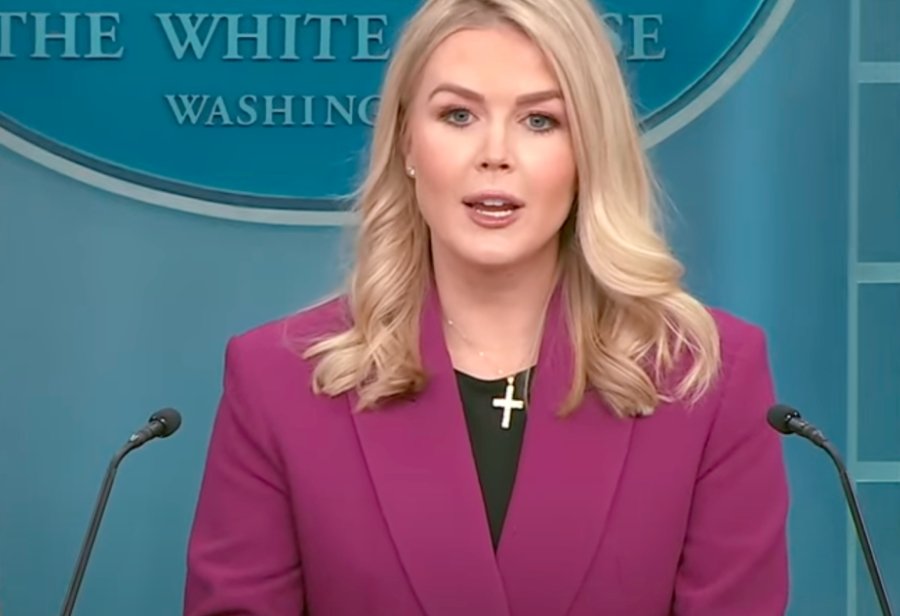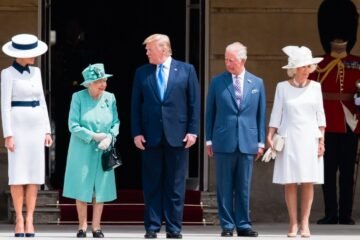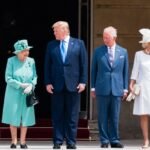The White House has abruptly cut the Wall Street Journal from President Trump’s press pool for his high-profile visit to Scotland, following a controversial story linking him to Jeffrey Epstein.
The move, made public just days before Trump’s four-day golf trip, has stirred a backlash from journalists and First Amendment advocates alike. The Journal’s reporter slated to cover the trip was removed from the press manifest—despite having no role in the bombshell piece that triggered the fallout.
Scotland Trip Turns into Media Flashpoint
Tarini Parti, the White House correspondent for the Journal, was originally scheduled to join Trump’s travel pool as the designated print reporter for the final leg of the president’s Scotland visit. Her plans changed quickly.
The decision came after the Journal published an explosive story alleging that Trump once sent a sexually charged birthday greeting to Jeffrey Epstein back in 2003. Trump has denied the letter’s existence. The Journal says it stands by its reporting.
Still, Parti wasn’t involved in writing the Epstein article. That didn’t matter. The White House said she—and the Journal—were out.

White House Tightens Its Grip on Press Access
Earlier this year, the Trump administration quietly shifted the authority to assign press pool slots away from the White House Correspondents’ Association. That responsibility now sits squarely with Trump’s team.
In a statement to POLITICO, press secretary Karoline Leavitt said the Journal’s removal was justified. “Due to the Wall Street Journal’s fake and defamatory conduct,” she claimed, “they will not be one of the thirteen outlets on board.”
Her message was blunt. She emphasized that no outlet is “guaranteed” access, not even to Air Force One or the Oval Office.
The Journal isn’t the first to feel the heat from Trump’s inner circle. Earlier this year, the Associated Press was completely ejected from all pool access after it refused to use the term “Gulf of America.”
Industry Pushback: “This Is Retaliation. Full Stop.”
Journalists across Washington didn’t stay quiet.
CBS’s Weijia Jiang, recently elected president of the White House Correspondents’ Association, issued a firm rebuke. “This attempt by the White House to punish a media outlet whose coverage it does not like is deeply troubling,” she wrote in a statement. “It defies the First Amendment.”
She called on the White House to immediately reverse the decision and reinstate the Journal’s access. Her words didn’t mince.
“This should concern all who value free speech and an independent media,” she warned.
Jiang’s statement drew support from several corners of the press corps, with reporters viewing the move as a dangerous precedent.
Trump’s Lawsuit Against WSJ Ramps Up Tensions
Two days before the press pool ban was announced, Trump took the Journal to court.
He’s suing for at least $10 billion in damages, accusing the paper of defamation over the Epstein letter story. Trump, who is known for aggressively challenging stories he doesn’t like, said the birthday greeting described by the Journal was “pure fiction.”
The Journal, for its part, hasn’t backed down.
A spokesperson declined further comment on the press pool situation, but the paper has previously stood behind the accuracy of its Epstein reporting.
This lawsuit adds fuel to an already hot fire—Trump has long accused the media of bias, but legal battles with major outlets have now become almost routine.
What Exactly Is the Press Pool—and Why Does It Matter?
For those unfamiliar, the press pool is a rotating group of journalists who share access to the president’s events, allowing broader coverage while limiting the total number of media on site.
Pool reporters are expected to file quick, factual dispatches—called “pool reports”—to all other outlets. Being part of the pool gives journalists valuable proximity, especially on foreign trips.
Here’s a quick breakdown of typical travel pool makeup:
| Media Type | Typical Members |
|---|---|
| 1-2 major national outlets | |
| TV (Camera + Crew) | 1 network (rotating) |
| Wire Service | Associated Press or Reuters |
| Radio | NPR or major radio network |
| Still Photography | One rotating outlet (often AP) |
When one outlet gets pulled, it doesn’t just impact that publication—it narrows the diversity of coverage and restricts what the public hears and sees.
A Pattern of Press Exclusion?
This isn’t a one-off.
The Trump White House has a history of yanking access from outlets it finds unfriendly. CNN, The Washington Post, and even NBC have been barred at various points since 2017.
The Associated Press was also booted earlier this year—completely removed from all pool rotations—after it refused to refer to the Gulf of Mexico by Trump’s preferred name, the “Gulf of America.”
That decision sent shockwaves through the media. Now, the Journal has become the latest headline.
But even this seems… smaller in scale.
As one Washington reporter put it bluntly: “It’s petty. But that’s the point.”
So, Is This the New Normal?
Maybe.
There’s growing concern that media access under Trump’s second term is becoming more performative than practical—curated by loyalty and punished by scrutiny.
Some reporters fear the shift toward an approval-based press pool could erode one of journalism’s core values: neutrality.
Others say the entire system is being gamed.
“This isn’t just about one trip to Scotland,” said a veteran political editor in D.C. “This is about who gets to ask questions. And who doesn’t.”


















